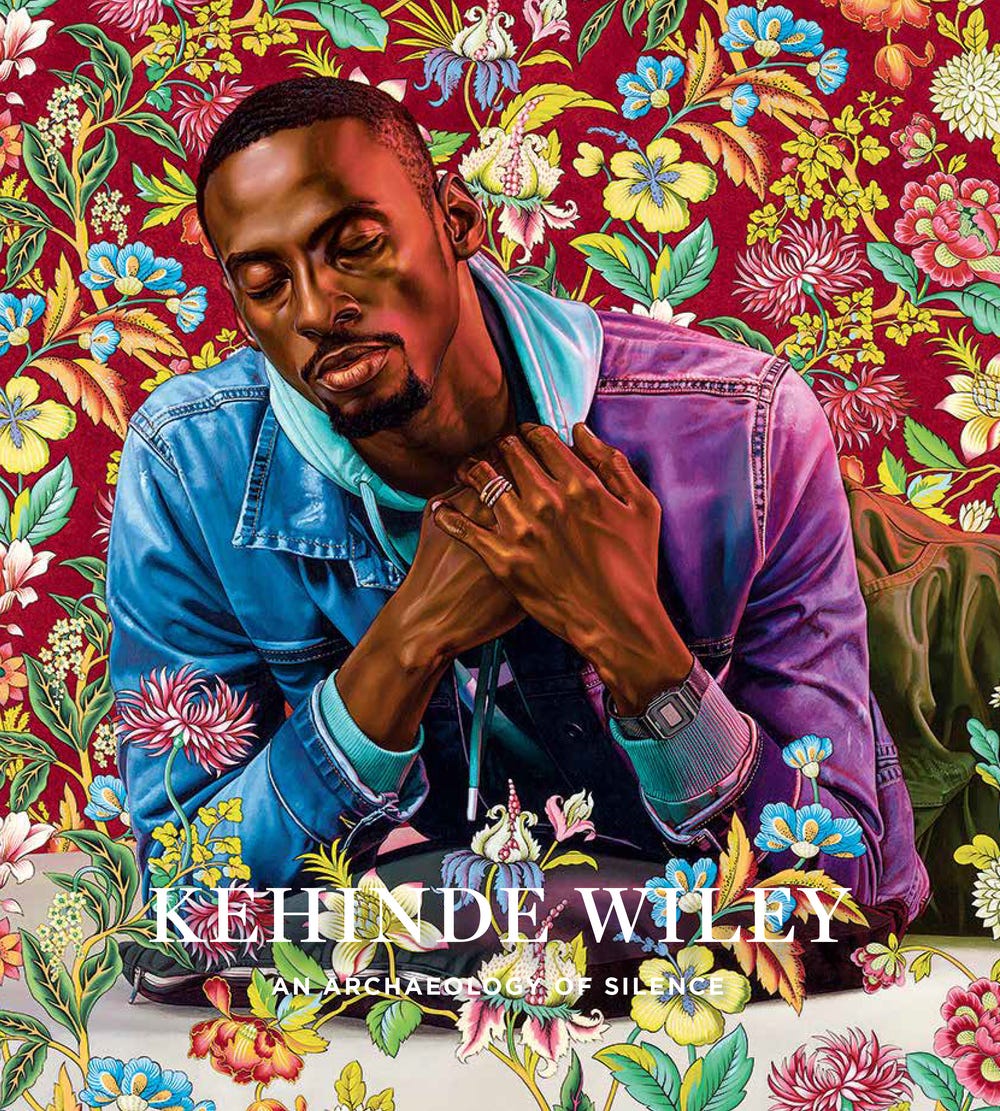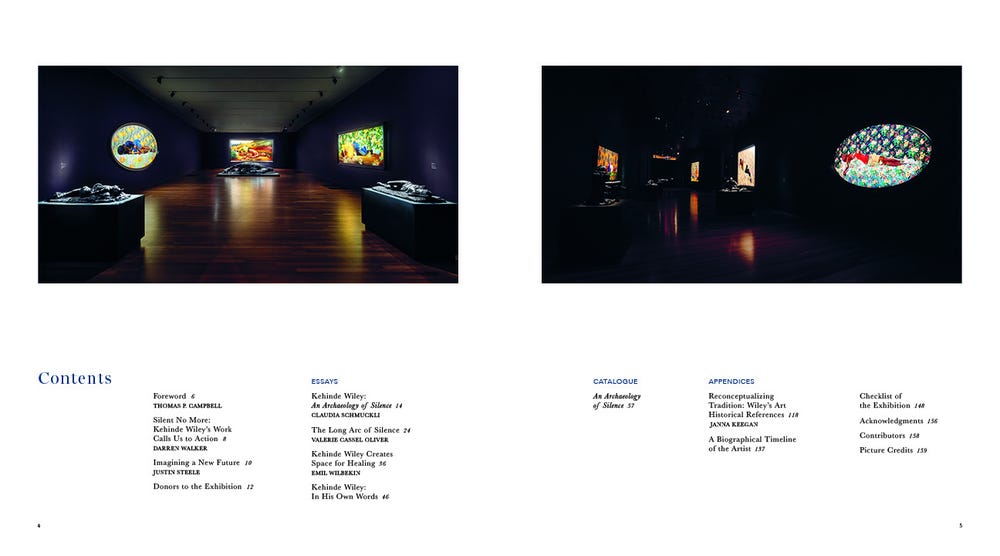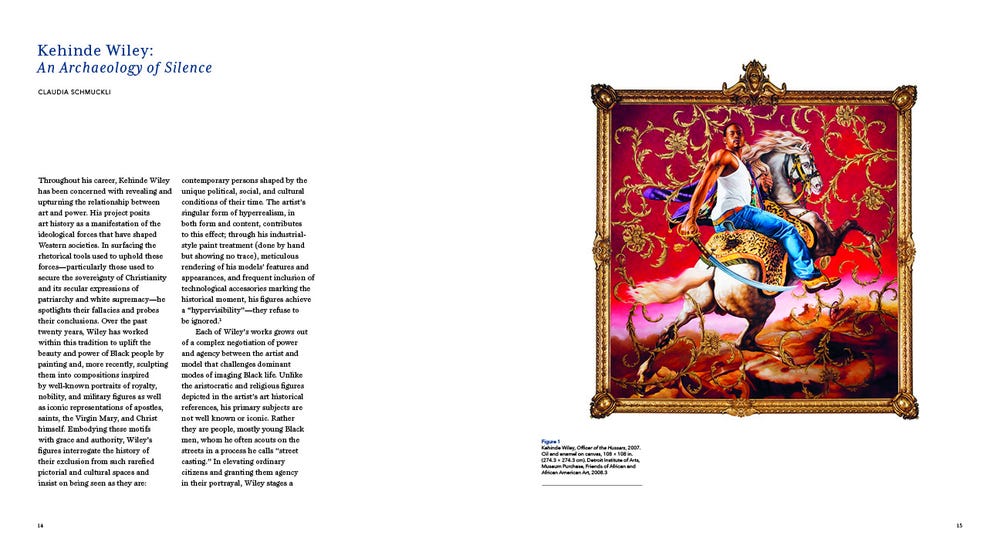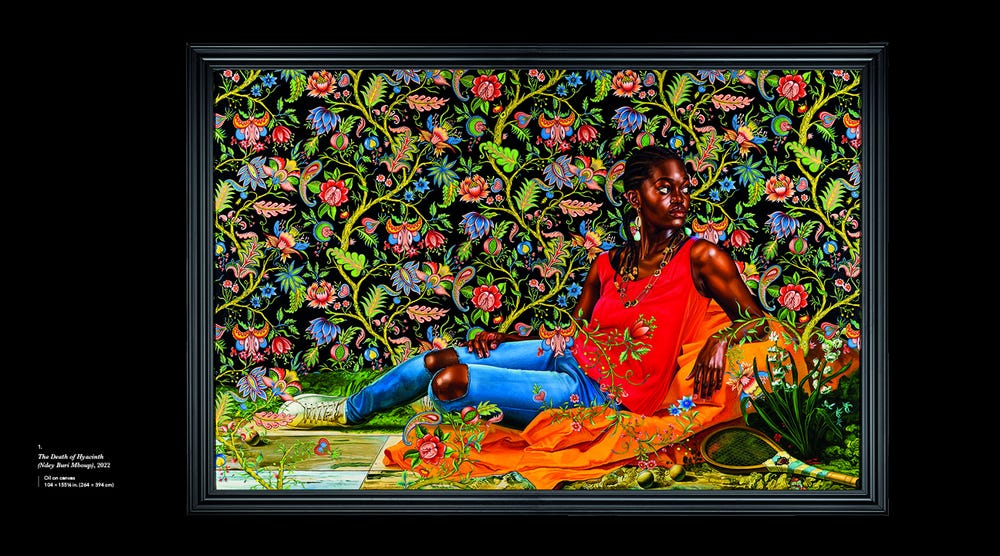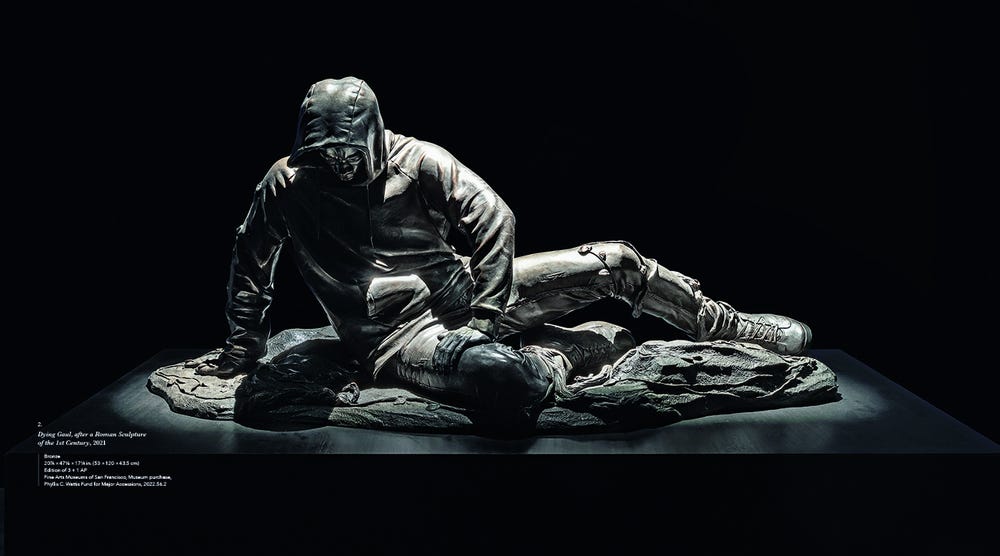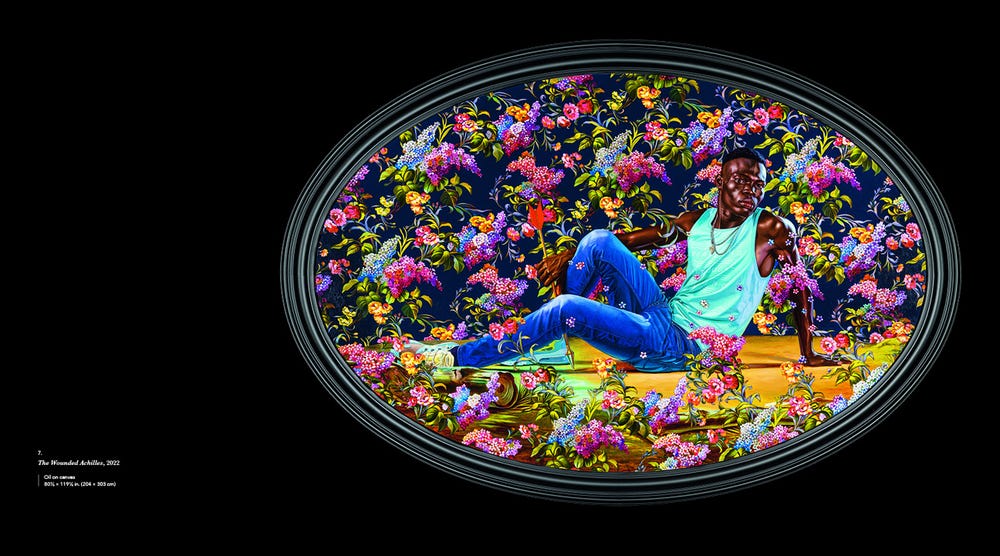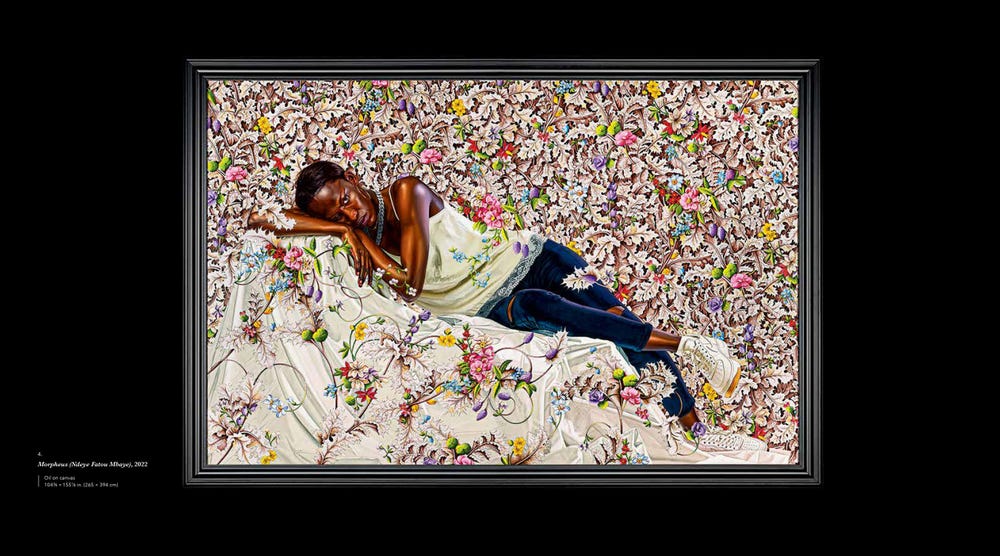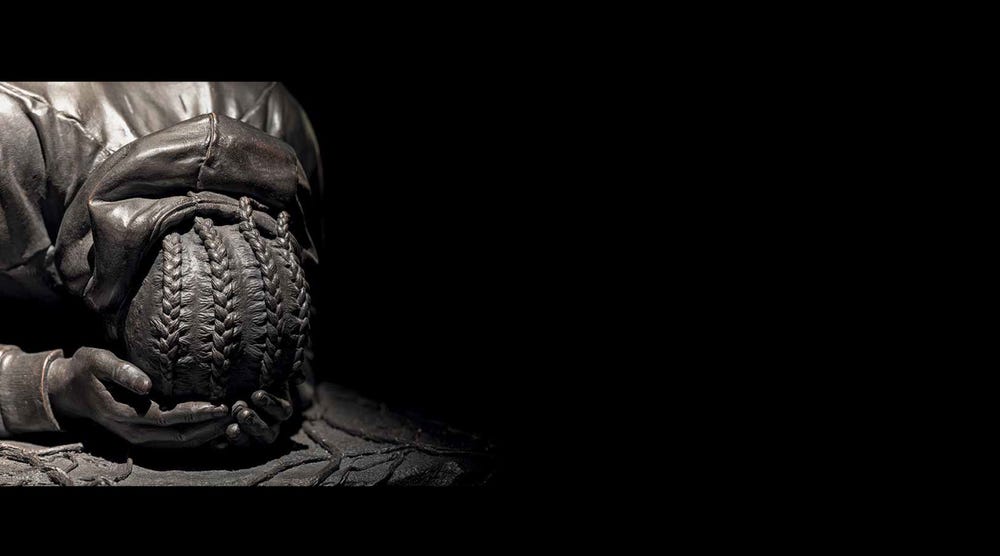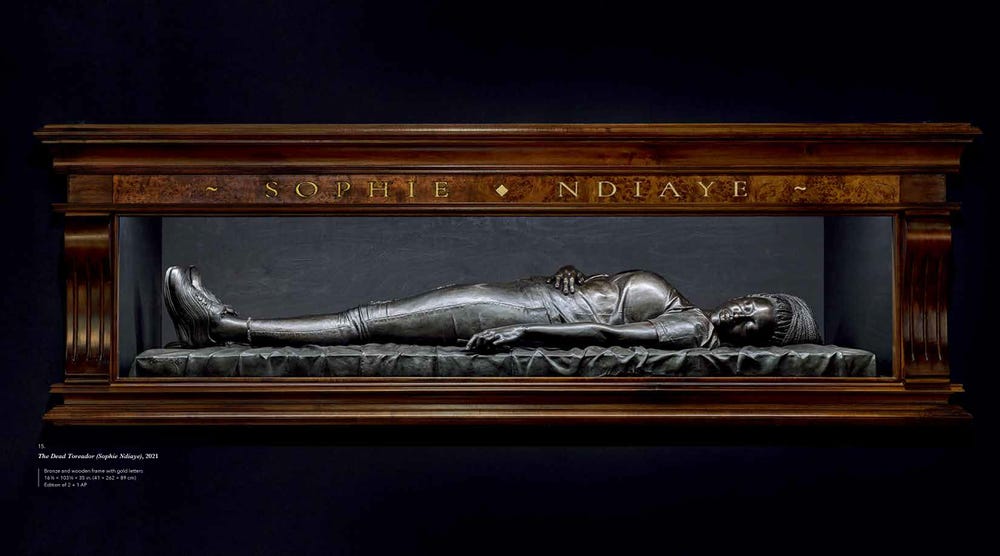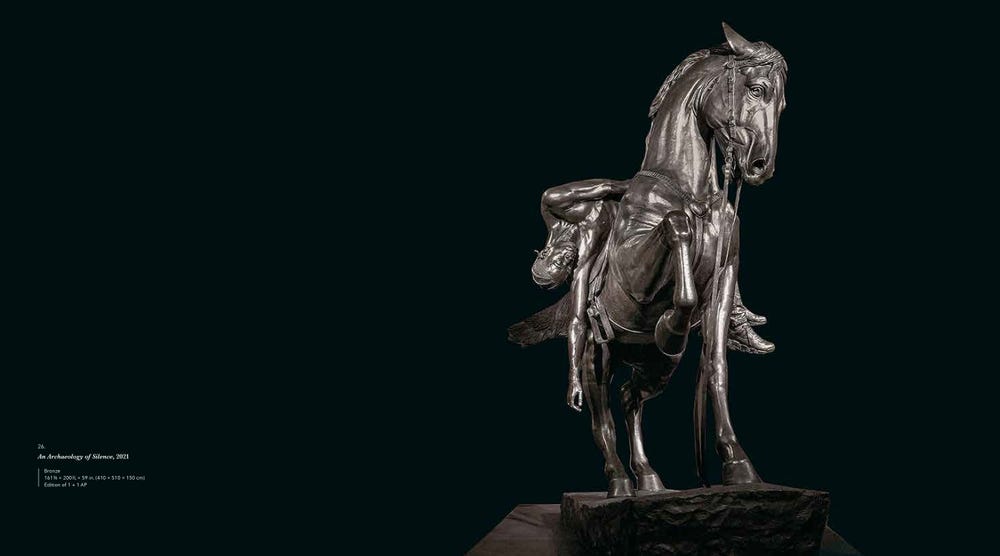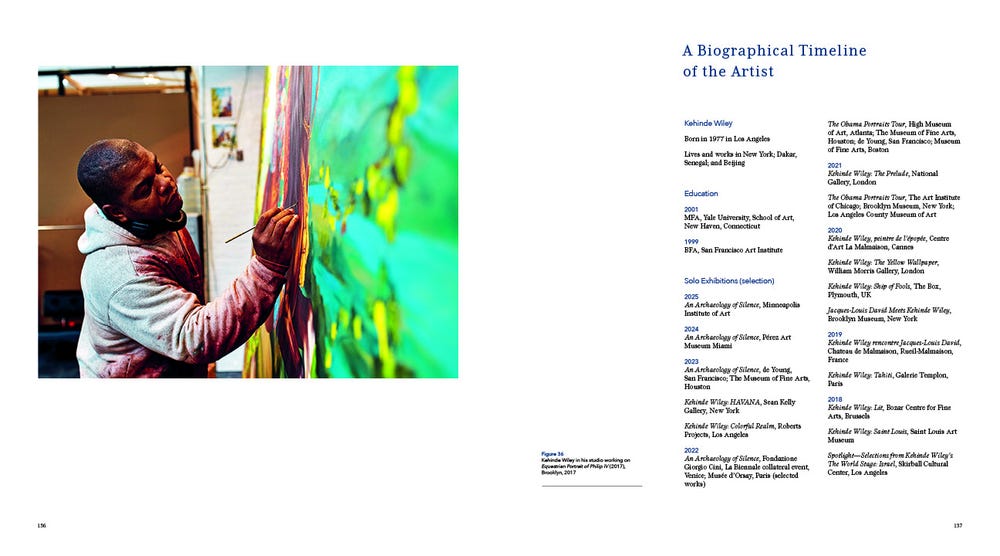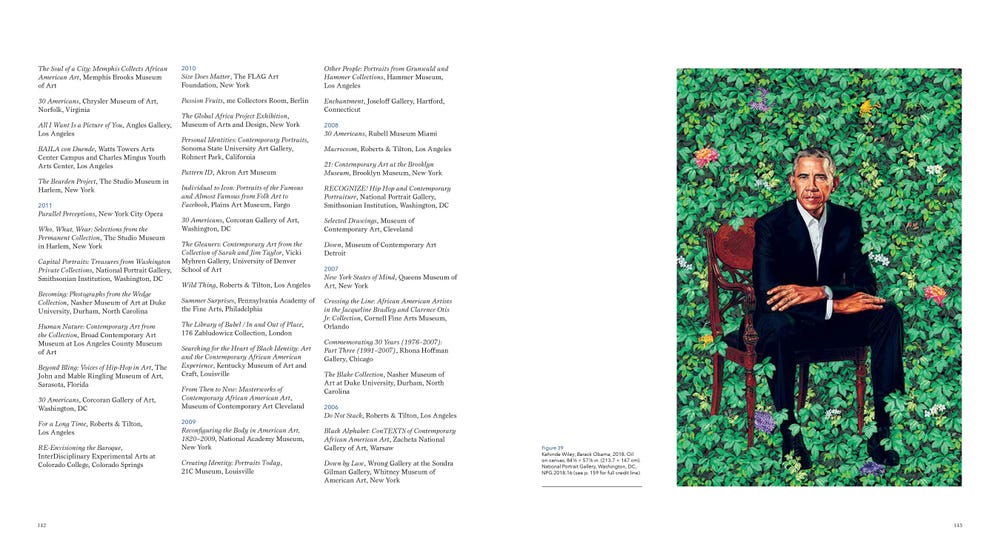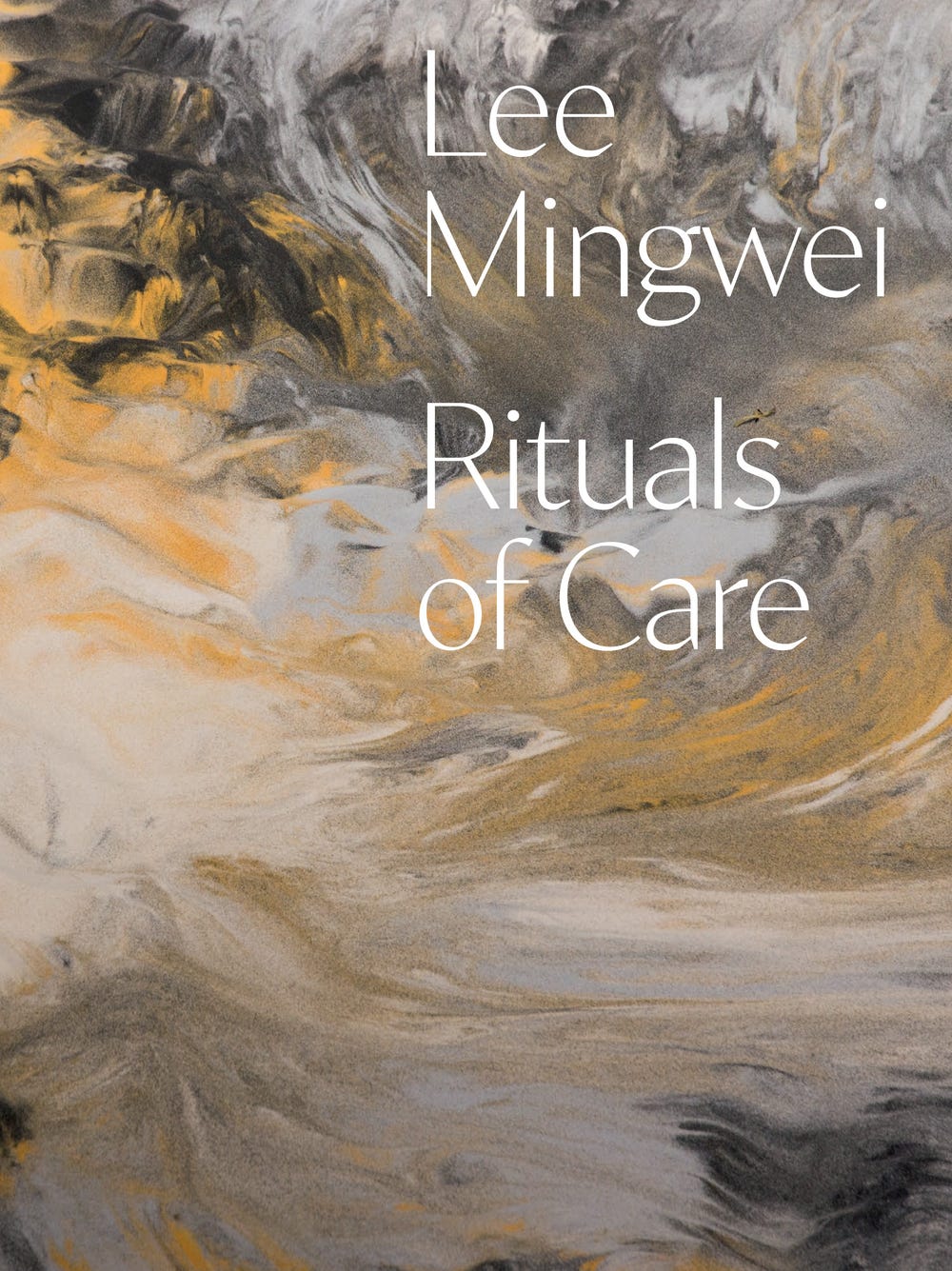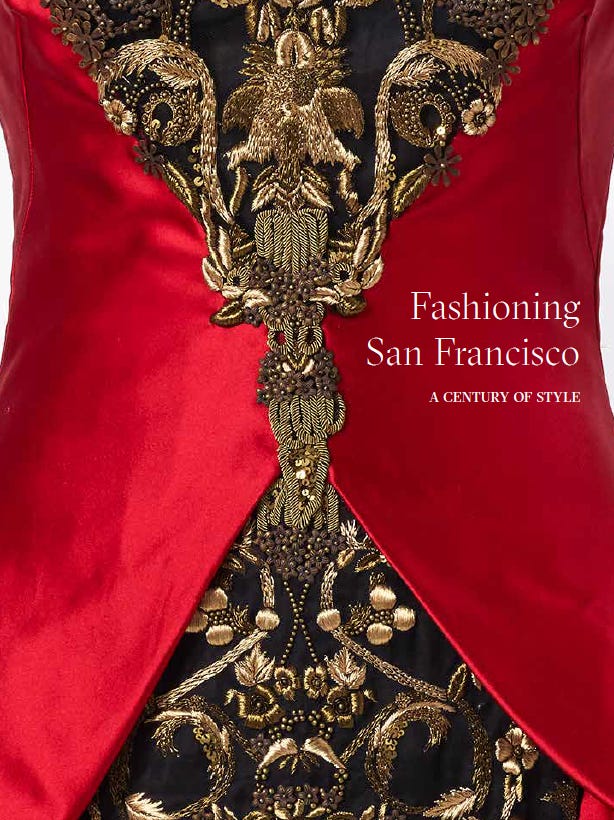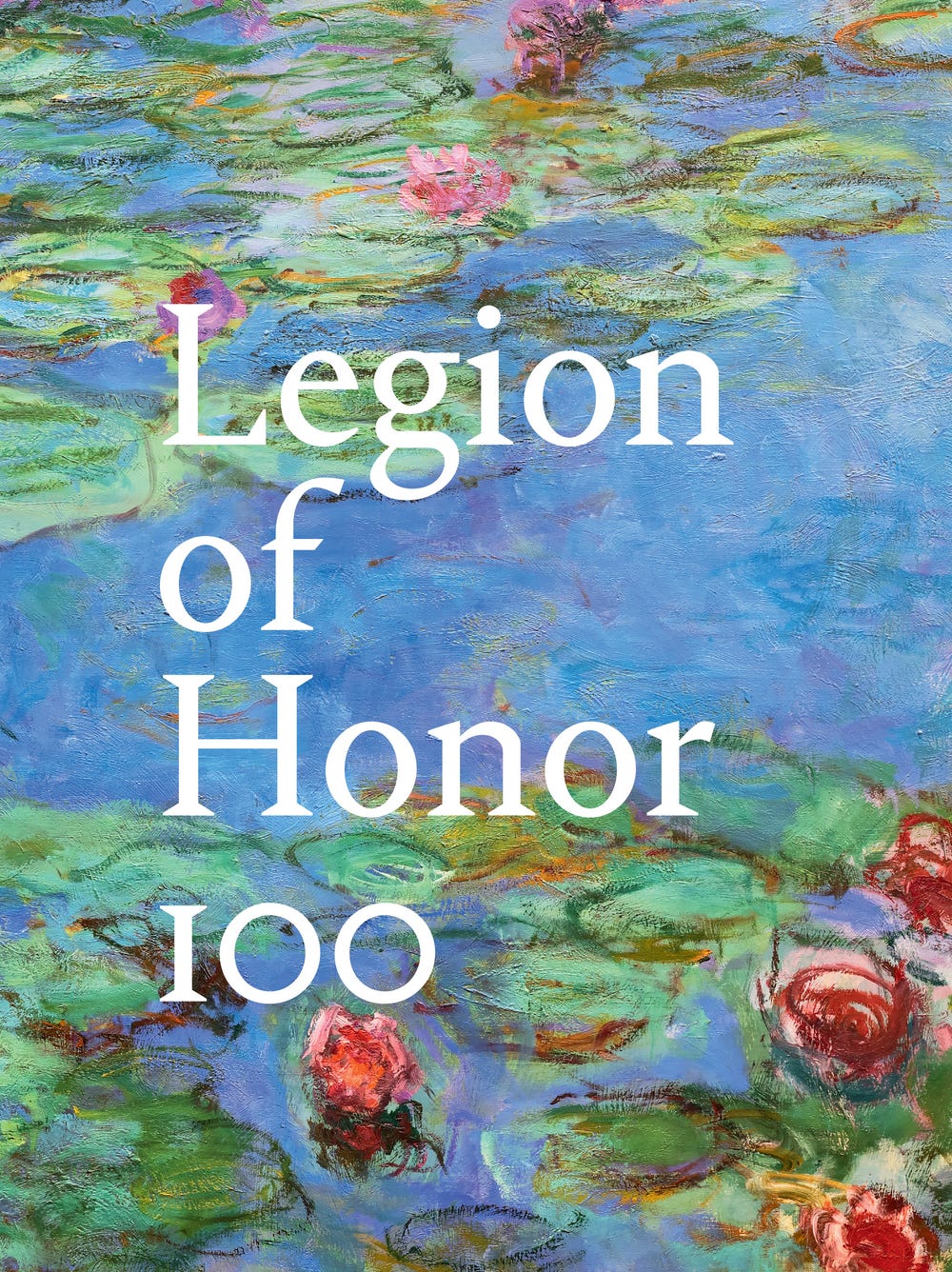Kehinde Wiley: An Archaeology of Silence
By Claudia Schmuckli, Valerie Cassel Oliver, Emil Wilbekin, and Janna Keegan
One of the leading figurative artists working today, Kehinde Wiley (American, b. 1977) trained formally in San Francisco. Wiley’s work uses the visual conventions of the heroic, the powerful, and the sublime to celebrate Black and Brown people he has met throughout the world, and he is renowned for “street casting” sitters from underserved communities and endowing their portraits with the scale and visual vocabularies of Renaissance, Baroque, and Romantic “Grand Manner” portraiture.
Published on the occasion of the 2023 exhibition Kehinde Wiley: An Archaeology of Silence at the de Young in San Francisco, this visually stunning catalogue presents Wiley’s new body of work: twenty-six paintings and sculptures created against the backdrop of the COVID-19 pandemic, the murder of George Floyd, and the rise of the Black Lives Matter movement. The paintings and sculptures, which include both the largest and the smallest works Wiley has ever done, confront the violent legacy of enslavement and colonialism through the motif of the recumbent figure. The works reflect Wiley’s deep engagement with art history, referencing historical paintings and sculptures of fallen heroes, lovers, martyrs, or saints. Wiley’s interpretations of these works of art, in which he repositions his subjects in visual landscapes traditionally reserved for the aristocracy and the privileged, continue his history of investigating the iconography of death and sacrifice in the Western art historical tradition and its rhetorical devices.
Featuring full-spread photographs of the artworks along with insightful essays, a first-person text by the artist, and a biographical timeline, Kehinde Wiley: An Archaeology of Silence enhances our understanding of this deeply moving and critically important body of work, which stands as a powerful elegy to the victims and survivors of systemic violence and offers moments of grief, grace, and healing.
Authors
Claudia Schmuckli is the curator in charge of contemporary art and programming at the Fine Arts Museums of San Francisco. She is the organizer and editor of numerous exhibitions and publications, including Uncanny Valley: Being Human in the Age of AI (2020), Wangechi Mutu: I Am Speaking, Are You Listening? (2021), and Judy Chicago: In the Making (2021).
Valerie Cassel Oliver is the Sydney and Frances Lewis Family Curator of Modern and Contemporary Art at the Virginia Museum of Fine Arts, Richmond, where she helped organize the acquisition of Kehinde Wiley’s sculpture Rumors of War (2019). She is also the editor of the exhibition catalogues Radical Presence: Black Performance in Contemporary Art (2013), Howardena Pindell: What Remains to Be Seen (with Naomi Beckwith, 2017), and, most recently, The Dirty South: Contemporary Art, Material Culture, and the Sonic Impulse (2021).
Emil Wilbekin is an assistant professor of journalism at the Fashion Institute of Technology, New York, and an award-winning journalist who has contributed to Architectural Digest, the Cut, Essence, the New York Times, Time, and Vogue. Wilbekin is also the founder of Native Son, a movement, community, and platform created to inspire and empower Black gay/Queer men.
Janna Keegan is the assistant curator of contemporary art and programming at the Fine Arts Museums of San Francisco. Her recent publications include Uncanny Valley: Being Human in the Age of AI (2020) and Judy Chicago: In the Making (2021).
